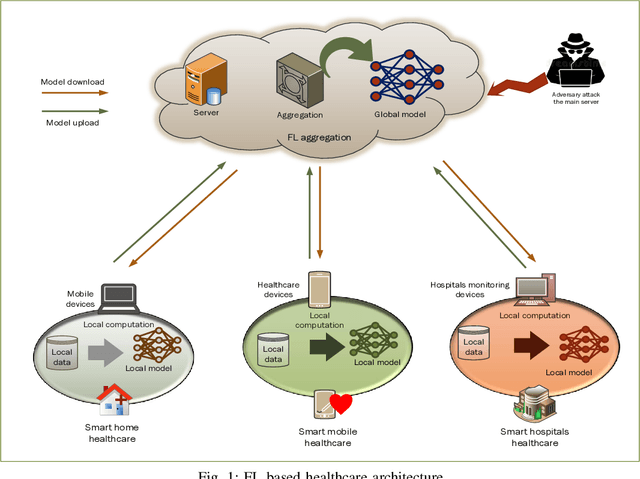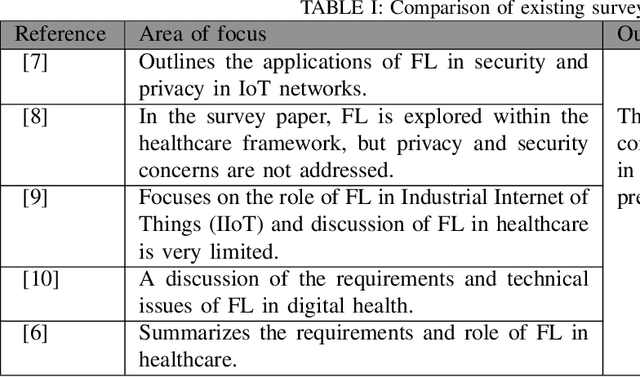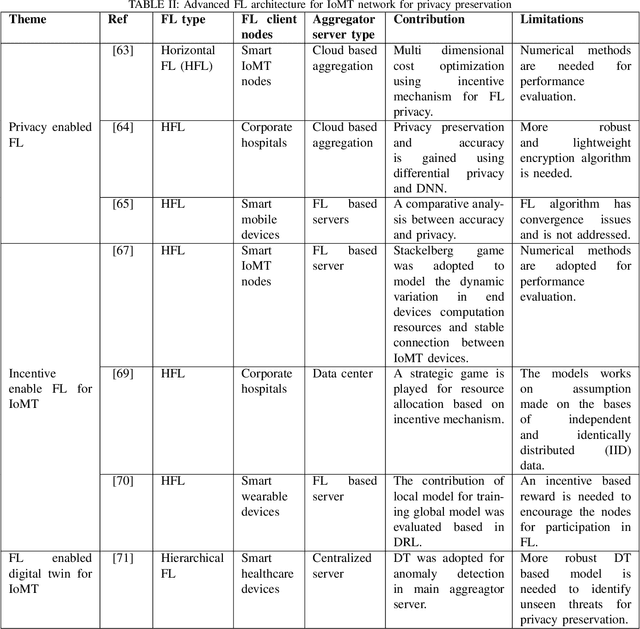Muhammad Tariq
Federated Learning for Privacy Preservation in Smart Healthcare Systems: A Comprehensive Survey
Mar 18, 2022


Abstract:Recent advances in electronic devices and communication infrastructure have revolutionized the traditional healthcare system into a smart healthcare system by using IoMT devices. However, due to the centralized training approach of artificial intelligence (AI), the use of mobile and wearable IoMT devices raises privacy concerns with respect to the information that has been communicated between hospitals and end users. The information conveyed by the IoMT devices is highly confidential and can be exposed to adversaries. In this regard, federated learning (FL), a distributive AI paradigm has opened up new opportunities for privacy-preservation in IoMT without accessing the confidential data of the participants. Further, FL provides privacy to end users as only gradients are shared during training. For these specific properties of FL, in this paper we present privacy related issues in IoMT. Afterwards, we present the role of FL in IoMT networks for privacy preservation and introduce some advanced FL architectures incorporating deep reinforcement learning (DRL), digital twin, and generative adversarial networks (GANs) for detecting privacy threats. Subsequently, we present some practical opportunities of FL in smart healthcare systems. At the end, we conclude this survey by providing open research challenges for FL that can be used in future smart healthcare systems
Deep Learning with Multiple Data Set: A Weighted Goal Programming Approach
Dec 17, 2021



Abstract:Large-scale data analysis is growing at an exponential rate as data proliferates in our societies. This abundance of data has the advantage of allowing the decision-maker to implement complex models in scenarios that were prohibitive before. At the same time, such an amount of data requires a distributed thinking approach. In fact, Deep Learning models require plenty of resources, and distributed training is needed. This paper presents a Multicriteria approach for distributed learning. Our approach uses the Weighted Goal Programming approach in its Chebyshev formulation to build an ensemble of decision rules that optimize aprioristically defined performance metrics. Such a formulation is beneficial because it is both model and metric agnostic and provides an interpretable output for the decision-maker. We test our approach by showing a practical application in electricity demand forecasting. Our results suggest that when we allow for dataset split overlapping, the performances of our methodology are consistently above the baseline model trained on the whole dataset.
 Add to Chrome
Add to Chrome Add to Firefox
Add to Firefox Add to Edge
Add to Edge